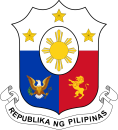Visa Philippines
The tourist visa for the Philippines falls under the category 9(a) Temporary Visitor's Visa. This information is from 2025, but please
note that this is subject to change at any time.
Here is the most important information – both for visa-free entry and for traditional visa applications.
Source Picture: Public Domain, Gemeinfrei, https://commons.wikimedia.org/w/index.php?curid=6371562
The Philippine Immigration Act prescribes fourteen different visas grouped into two broad categories:
Section 9 visas (non-immigrant visas), for temporary visits such as those for tourism, business, transit, study or employment
Section 13 visas (immigrant visas), for foreign nationals who wish to become permanent residents in the Philippines
Some visas have been introduced by subsequent legislation or proclamation of the President which are not classified by the Philippine Immigration Act as either being a Section 9 or Section 13 visa. These visas are called special visas and are issued to groups such as retirees, investors and entrepreneurs.
Source text: https://en.wikipedia.org/wiki/Visa_policy_of_the_Philippines
1.) Visa-free entry (for many nationalities)
Citizens of approximately 157 countries (including Germany, Austria, and Switzerland) may enter without a visa.
- Maximum length of stay:
Standard: 30 days (for most European countries)
Japan, Brazil, and Israel: 59 days
Some ASEAN countries: only 14 days
Source Pic: Own work, H. Rufer
- Conditions:
Passport valid for at least 6 months upon entry.
Return or onward flight ticket.
No entry ban or blacklist.
Extensions on-site
- Responsible: Bureau of Immigration (BI) or accredited agencies.
- After 59 days, an ACR-I Card (Alien Certificate of Registration) must usually be applied for if the stay is longer.
- Extensions are subject to a fee but can allow for stays of up to several years (especially for long-term travelers).
2.) Non-Immigrant Visas (short-term or temporary stay)
For foreigners visiting or staying temporarily without the intent to immigrate.
-
9(a) Temporary Visitor Visa – For tourism, business meetings, or short-term visits.
-
9(b) Transit Visa – For those passing through the Philippines en route to another country.
-
9(c) Seaman/ Crew Member Visa – For crew members joining vessels or aircraft in the Philippines.
-
9(d) Treaty Trader/Investor Visa – For nationals of countries with a treaty of commerce with the Philippines who engage in trade or investment.
-
9(e) Foreign Government Official Visa – For diplomats and foreign government officials.
-
9(f) Student Visa – For foreigners studying in the Philippines.
-
9(g) Pre-arranged Employment Visa – For foreigners with approved work permits from the Department of Labor and Employment.
3.) Immigrant Visas (long-term or permanent stay)
For foreigners intending to live permanently in the Philippines.
-
Quota Immigrant Visa (13) – Limited to 50 visas per year per nationality.
-
Non-Quota Immigrant Visa (13 series) – For specific cases like:
-
13(a) – For spouses or unmarried children (below 21) of Filipino citizens.
-
13(b) – For children born abroad to immigrants.
-
13(c) – For children born subsequent to the issuance of a visa to accompanying parent.
-
13(d) – For women who lost Philippine citizenship due to marriage to a foreigner.
-
13(e) – Returning former natural-born Filipinos.
-
13(g) – For natural-born Filipinos who acquired foreign citizenship but wish to reside permanently.
-
4.) Special Visas
Issued under special laws or executive orders.
-
Special Resident Retiree’s Visa (SRRV) – For foreign retirees meeting certain deposit/investment requirements.
-
Special Investor’s Resident Visa (SIRV) – For foreigners investing at least USD 75,000 in the Philippines.
-
Special Visa for Employment Generation (SVEG) – For foreigners employing at least 10 Filipino workers.
-
Special Visa for Employment Generation (SVEG) – For foreign nationals generating employment in the Philippines.
-
PEZA or BOI Special Visas – For foreign employees of companies registered with the Philippine Economic Zone Authority or Board of Investments.
-
Special Visa for Accredited International Organizations – For employees of international organizations recognized by the Philippine government
References: https://evisa.gov.ph/


